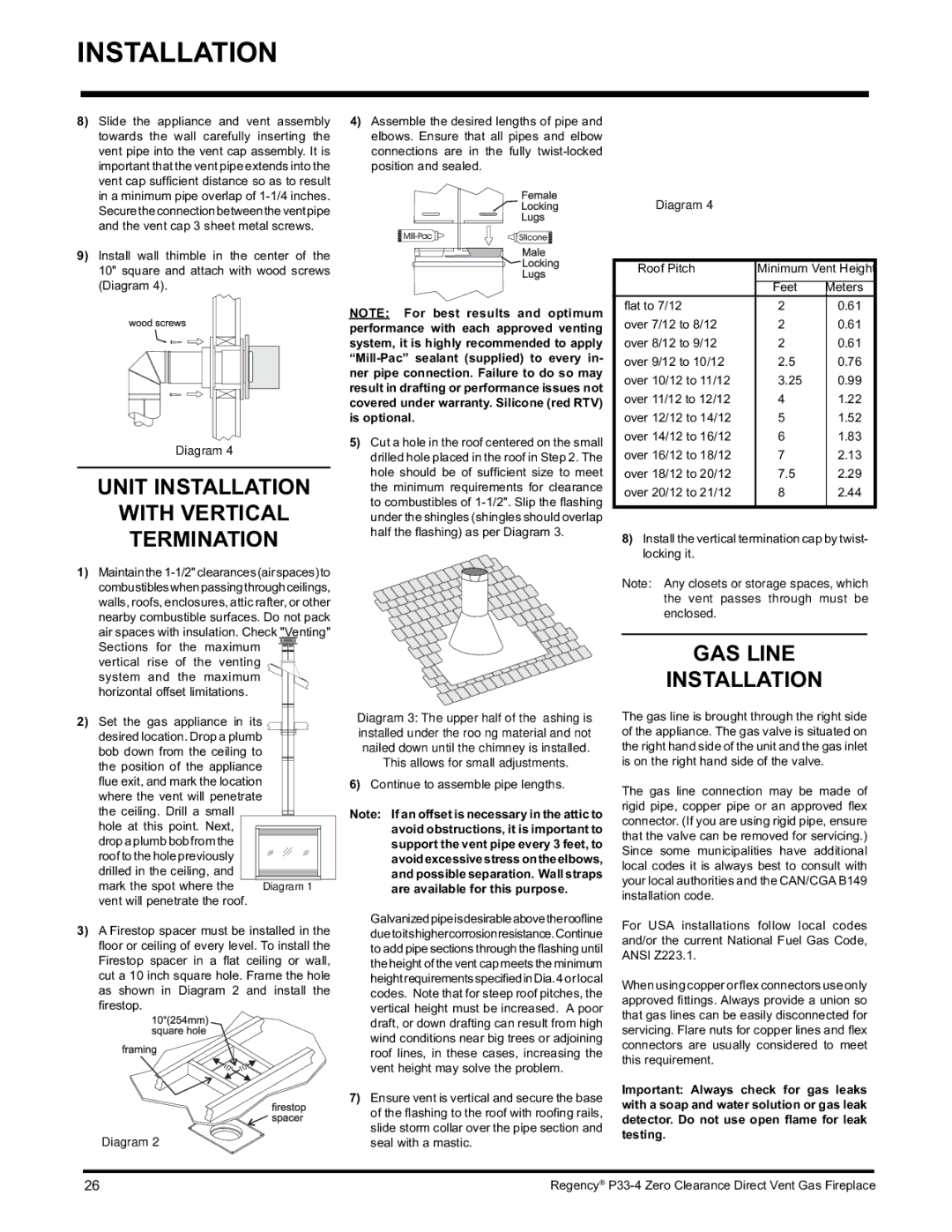P33-LP4 specifications
Regency P33-LP4 is an innovative and versatile propane gas fireplace designed to provide both warmth and ambiance while enhancing the aesthetic appeal of any living space. This model stands out for its combination of modern technology, functionality, and elegance, making it a popular choice among homeowners seeking an efficient heating solution without sacrificing style.One of the key features of the P33-LP4 is its contemporary design. The fireplace presents a sleek, minimalist look that integrates seamlessly into both traditional and modern interiors. It offers a range of finishing options, including various trims and glass fronts, allowing homeowners to tailor the appearance of the fireplace to their personal taste and existing decor.
A hallmark of the Regency P33-LP4 is its advanced heating capabilities. With a powerful output of up to 33,000 BTUs, this fireplace can efficiently heat spaces of different sizes, making it suitable for both small cozy rooms and larger open areas. The unit also features a high-efficiency burner that maximizes heat production while reducing fuel consumption, which is ideal for energy-conscious users.
In terms of technology, the P33-LP4 boasts a user-friendly electronic ignition system that ensures reliable startups, even in colder temperatures. The fireplace can be controlled through a convenient remote or a wall switch, allowing users to adjust the flame height and heat settings with ease. Additionally, the unit incorporates a fan that circulates warm air throughout the room, enhancing overall heating efficiency and comfort.
Safety is paramount in the design of the Regency P33-LP4. The fireplace is equipped with a built-in safety shut-off feature that automatically turns off the gas supply in case of an unexpected accident. Moreover, the glass front remains cool to the touch, reducing the risk of burns and making it family-friendly.
Flexibility is another advantage of the P33-LP4, as it can be installed in various configurations, including as a built-in unit or a freestanding fireplace. The options for installation enable homeowners to create a unique focal point in their living space, adapting to different architectural layouts.
In conclusion, the Regency P33-LP4 combines contemporary design, efficient heating technology, and safety features, making it an excellent choice for those seeking a stylish and functional propane fireplace. Its versatility and reliability enhance the home environment while providing a warm and inviting atmosphere for family and guests.

